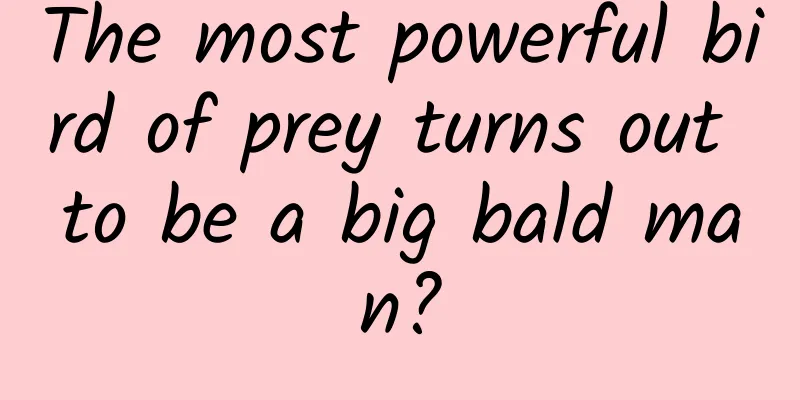The most powerful bird of prey turns out to be a big bald man?

|
Around 3500 BC, a large number of humans migrated out of Taiwan, China. Over the next five thousand years, they migrated across the vast archipelago of the South Pacific, creating a brilliant Austronesian civilization. Before they set foot on New Zealand, there lived the largest known bird of prey on Earth, a giant bird later known as the Haast's Eagle. The Haast's eagle, more formally known as the Moore's eagle (Hieraaetus moorei), has a wingspan of about 2.6 to 3 meters and weighs an estimated 15 kilograms. Its close relative, the pygmy eagle (H. weiskei), is the smallest eagle in existence, weighing only 500 grams. They lived on the South Island of New Zealand for generations, but soon after the Maori arrived about 600 years ago, the Haast's eagle quickly became extinct, becoming a small footnote in the history of human migration. Comparison of the foot bones of H. morphnoides and H. morphnoides | Michael Bunce et al./ PLoS Biology (2005) Birds of prey that hunted the moa The Maori did not intend to exterminate the Haast's eagle, but they were also involved. The dispute started with another type of large bird - the moa. There have been nine species of moa in history, all of which are flightless birds that live in New Zealand. They vary in size, with the largest being the Southern Giant Moa (Dinornis robustus) that lives on New Zealand's South Island, which is 3 meters tall and weighs more than 200 kilograms. The huge body of the Haast's eagle was born to hunt moas. Many unearthed moa pelvises have huge holes. People speculate that Haast's eagle fell from the sky, pierced the body of the moa with its sharp claws, and then attacked the head and neck of the moa with its powerful beak to kill it. Birds of prey falling from the sky can be said to be the nightmare of ground creatures. In Maori legends, there is a giant eagle called Poukai, which is so big that it can hunt humans. Its prototype may be Haast's eagle. Reconstruction of a Morse's eagle attacking a moa, by John Megahan | Michael Bunce et al./ PLoS Biology (2005) However, archaeological evidence does not support the rumor that Haast's eagle hunted humans. Instead, Haast's eagle died because of humans. There have never been large mammals on the isolated islands of New Zealand. Moa occupied the ecological niche of large herbivores. Except for the birds of prey above their heads, there was nothing on the ground to worry about them - until two-legged animals came by boat. That was in 1280 AD. The newly arrived Maori people quickly became familiar with the flightless moa and learned to use them as a rich source of meat. No matter how big the moa was, it could not defeat human traps and weapons. In just over a hundred years, all the moa species in the North and South Islands became extinct, and with it, the end of the Haast's eagle. Comparison of claws. From largest to smallest: Morse's falcon, a large buzzard Buteogallus borrasi that became extinct in the early Holocene, Pithecophaga jefferyi, a famous character in Black Cat Sheriff, Aquila audax, and Circus approximans | Richard N Holdaway / University of Canterbury (1991) When Europeans arrived in New Zealand, they heard stories from the Maori about giant birds roaming the islands. However, they arrived too late to see any moa, and certainly not the giant eagles that feed on them. Large birds of prey need a vast living space, and there are an estimated 3,000 to 4,500 pairs of Haast's eagles on the 150,000 square kilometers of the South Island. The small population is easily disturbed, so after the moa became extinct 1,400 years ago, the Haast's eagle quickly died out. Heroic and handsome, but still bald all year round Haast's hawk was first described by biologists in 1871. Its species name "Moorei" comes from the estate where its skeleton was found (Moore's Estate?). Its genus name comes from the Greek harpax and ornis, a suture of hook and bird. Since its name, people have believed that it was a majestic predator. The reconstructions of Haast's Eagle that we can see are all based on the heroic eagles. A recent study published in the Proceedings of the Royal Society B revealed that Haast's Eagle may have a face that we don't know. The researchers compared the skull and claws of Haast's Eagle with those of five living birds of prey and found that although they had long claws, their skulls were more similar to those of the Andean condor Vultur gryphus, suggesting that the feeding method of Haast's Eagle may be closer to that of scavenging birds of prey. Photographs and drawings of the skull of Morse's falcon | Transactions and Proceedings of the Royal Society of New Zealand In this picture, after Haast's eagle killed a moa, it probably looked more like a vulture or buzzard eating its meal today. Because there were no scavengers on the ground in New Zealand, Haast's eagle would not rush to take its prey away (even if it wanted to, it couldn't), but would eat on the spot. Its first step was to stick its bare, hairless head into the belly of the prey and eat the internal organs, just like the vultures on the African grasslands today. This conjecture is not groundless. Maori people on the South Island have depicted the image of Haast's eagle in rock paintings. The giant bird in the painting has a dark body, but its head is obviously light-colored. Researchers believe that this is a depiction of the bald appearance of Haast's eagle, which also proves its diet. In "Golden Kamuy", Ahirripa encountered a strange bird that was larger than the Steller's sea eagle Haliaeetus pelagicus. It almost caught her. The author explained that it was a mysterious vulture Aegypius monachus. In fact, the claws of a scavenger bird do not have such great strength. | "Golden Kamuy" Unable to retain Even today, there are still strange stories about moa and giant eagles in New Zealand from time to time, but such large animals cannot remain hidden while maintaining their populations, and the legend of the southern taka cannot be repeated in these large birds. Those who have seen the giant birds are no longer here, and no matter how many rumors there are, they are just rumors. The models of fighting in the museum and the vague giant birds on the rock paintings are the last memories of humans for a lost species. Model of a Morse's falcon attacking a moa | Sergio Alexandro / Wikimedia Commons This article comes from the Species Calendar, welcome to forward |
<<: Why can't I remember what day of the week it is? How did the seven-day week come about?
>>: Do air fryers cause cancer? Is cooking without oil healthier? The reliable answer is...
Recommend
The popular model commonly used in NetEase H5!
Good ideas are not impossible to replicate. This ...
The tragedy of Lenovo: Why did it fail miserably in the mobile phone market despite owning Motorola?
For Lenovo, a long-established company, there wer...
Is Android finally going to launch Google's official QR code scanning library?
I believe that QR code scanning is no longer a no...
How to cold start a new live broadcast account?
This article starts from the perspective of small...
The most comprehensive analysis of Meituan’s food delivery platform ranking logic!
Newbies will definitely be at a loss when they fi...
Peng Gang of LeTV: Users are the only ones who decide the direction of product development
On August 27, at the first China Smart TV Industr...
Liquid oxygen-kerosene rocket engine: the "new engine" supporting China's space program
Author: Huang Xianghong Duan Yuechu In the journe...
How to achieve user experience beyond expectations?
Each product iteration requires that the new user...
"Attack of the Helium Nucleus": New Challenges for Low-Energy Nuclear Theory
Helium nuclei (alpha particles) are one of the mo...
Can header images also increase open rates? It's not impossible!
The backend revisions can always be adapted to, a...
WeChat: No illegal off-campus training for primary and secondary school students on the platform
[[439277]] Recently, the WeChat team released the...
Chengdu tea drinking resource group, a good place to drink tea
Appointment arrangements for the Chengdu tea drin...
On Chance and Skill in Game Design
[[130336]] For games that require players to make...
#千万IP创科普# It's called "Ling Bu Fu", a 10-year-old "snow mountain warrior"
On September 1, the 2024 "First Lesson of th...
How to get users to try your new product? Here are 5 tips!
A while ago, a new coffee shop opened downstairs ...









